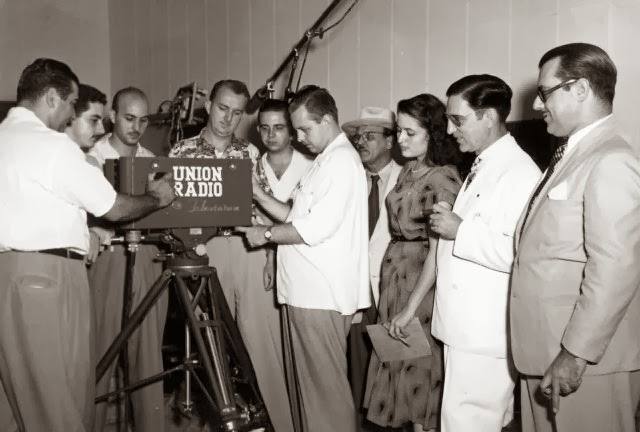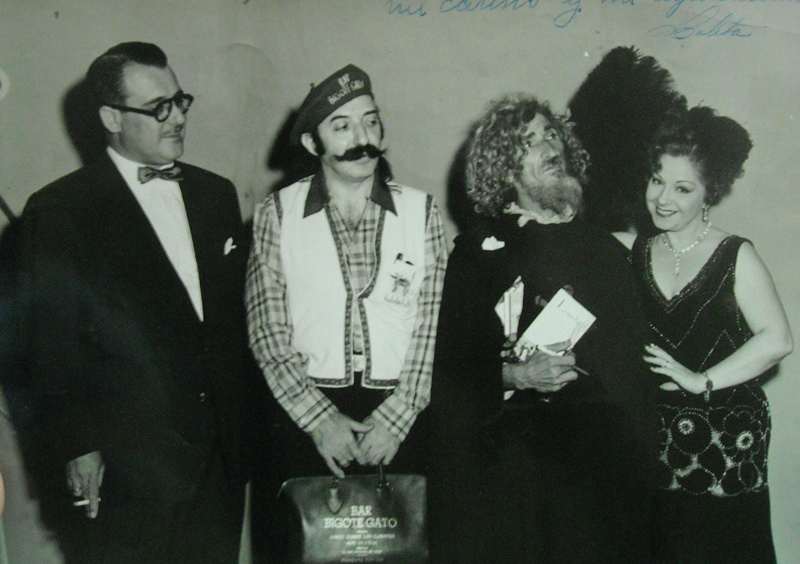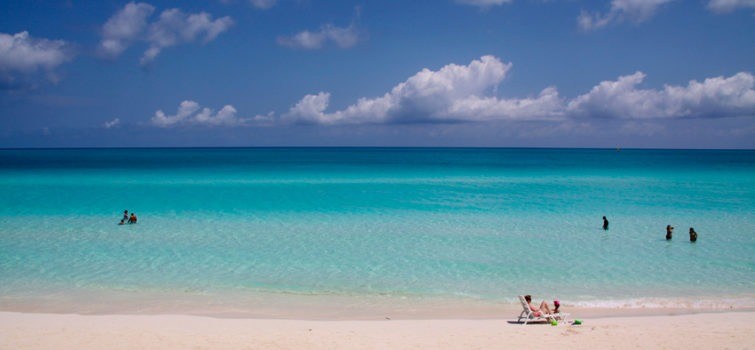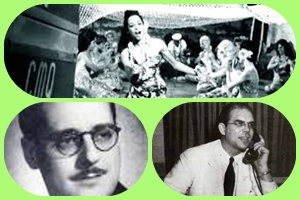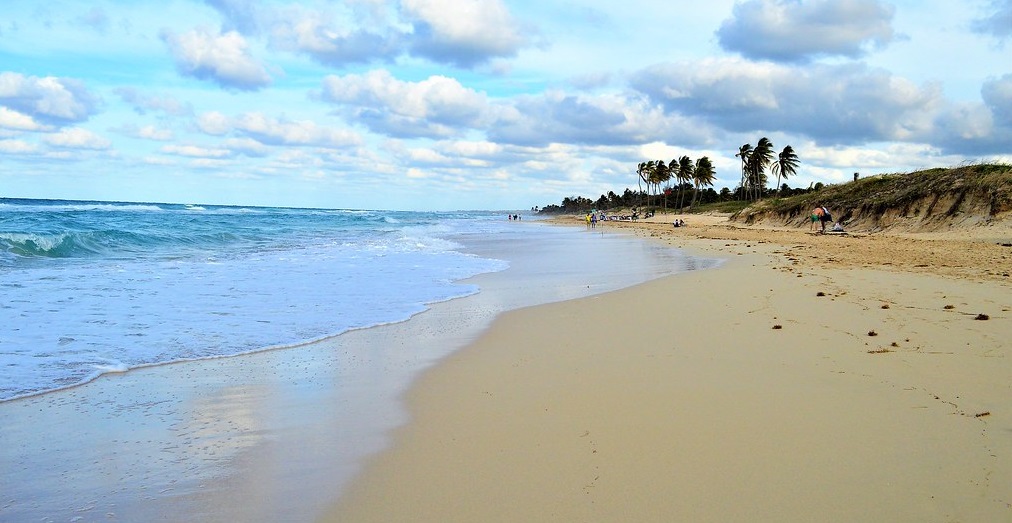LOS PRIMEROS PASOS DE LA TV CUBANA. VISITA DEL “CABALLERO DE PARIS” A GASPAR PUMAREJO.
La televisión cubana, desde el 24 de octubre de 1950, redimensiona las imágenes en movimiento, la información, el deporte, la comunicación comercial y el arte que se expande progresivamente hacia diversas provincias.
Nuestra Industria Cultural, sustentada en la publicidad, el teatro, la radio y la televisión, tuvo como ejes la competencia por los anunciantes y las audiencias, la exclusividad del Sistema de estrellas y la diversificación de los géneros y formatos de la programación mediática habitual.
En fecha tan temprana como 1951 comenzó una variante sui generis de cadena nacional de video habanera (Canal 6 CMQ TV) a la que, tras la instauración de las primeras redes de microondas, se sumarían las del Canal 4 y las del Canal 2, respectivamente. Tales redes, en forma creciente, cubrirían las principales capitales provinciales de mayor poder adquisitivo de la nación.
VISITAS A “ESCUELA DE TV” Y PEQUEÑA HISTORIA.
De esta manera, irrumpieron en los escenarios televisivos costumbres, tradiciones y personalidades habaneras, como artistas, científicos, intelectuales, políticos, comunicadores, ejecutivos mediáticos, emigrantes españoles y auténticos personajes populares de gran notoriedad. Entre estos últimos destacaron “La marquesa”, “Tarzán”, “Chapitas”, El caballero de París y “Bigote de gato”, quienes compartieron múltiples espacios comunes.
El caballero de París había nacido en Vilaseca (Lugo, España). Arribó a Cuba durante la primera decena del siglo XX, junto a tres hermanos, para apoyar al tío gastronómico que entonces trabajaba en el Hotel Telégrafo. El Caballero hablaba inglés, gallego y español. Por 1921, había sido valet en una familia aristocrática de El Vedado y trabajador del comercio.
Tras seis años preso por supuesto robo, al salir de prisión ya era víctima de un delirio de grandeza que nunca le abandona. De esta manera, devino ambulante habanero, siempre pausado y con maneras elegantes. Llamaba la atención por su capa caballeresca, su compacta y su larga melena. Paradójicamente, no pedía limosnas, pero las agradecía otorgando consejos y mercedes del irreal universo medieval donde, en su ficción, ostentaba títulos nobiliarios.
Era prohijado por algunos comerciantes (entre ellos, Bigote de gato, barman español propietario de un bar-café, donde El caballero siempre desayunaba. Es precisamente con este peculiar y popular comerciante, con quien asiste a un programa televisivo de Escuela de TV, en el Canal 2 (Telemundo) realizado por la productora audiovisual propiedad de otro coterráneo ibérico, Gaspar Pumarejo Such. Este último durante 1950 había inaugurado el Canal 4 (Unión Radio TV), nuestra primera televisora.
El caballero ingresa definitivamente en el Hospital Psiquiátrico de Mazorra en diciembre de 1977, donde restaña su salud y fallece querido y respetado por todos. Antes de morir, razona que estos “no eran tiempos de caballeros ni de aristócratas”.
FIRST STEPS OF CUBAN TV. VISIT OF THE “CABALLERO DE PARIS” TO GASPAR PUMAREJO.
Cuban television, since October 24, 1950, has resized moving images, information, sports, commercial communication, and art that is progressively expanding to various provinces.
Our Cultural Industry, supported by advertising, theater, radio, and television, had as axes the competition for advertisers and audiences, the exclusivity of the Star System, and the diversification of genres and formats of regular media programming.
As early as 1951, a sui generis variant of the national Havana video chain (Channel 6 CMQ TV) began, to which, after the installation of the first microwave networks, those of Channel 4 and Channel 2, respectively, would be added. Such networks, increasingly, would cover the main provincial capitals with the highest purchasing power in the nation.
VISITS TO “ESCUELA DE TV” AND A LITTLE HISTORY.
In this way, Havana customs, traditions, and personalities, such as artists, scientists, intellectuals, politicians, communicators, media executives, Spanish emigrants, and authentic popular characters of great notoriety, burst onto the television scenes. Among the latter, “La Marquesa”, “Tarzán”, “Chapitas”, El caballero de París and “Mustache de Gato”, who shared multiple common spaces.
The gentleman from Paris was born in Vilaseca (Lugo, Spain). He arrived in Cuba during the first decade of the 20th century, along with three brothers, to support the gastronomic uncle who then worked at the Hotel Telégrafo. The Knight spoke English, Galician and Spanish. By 1921, he had been a valet in an aristocratic family from El Vedado and a commerce worker.
After six years imprisoned for alleged robbery, upon leaving prison he was already the victim of a delusion of grandeur that never leaves him. In this way, he became a Havanese itinerant, always slow and with elegant manners. He was striking for his chivalrous coat, his compact, and his long hair. Paradoxically, he did not ask for alms, but he thanked them by giving advice and grants from the unreal medieval universe where, in his fiction, he held noble titles.
He was forbidden by some merchants (among them, Bigote de Gato, a Spanish barman who owns a bar-café, where El caballero always had breakfast. It is precisely with this peculiar and popular merchant, with whom he attends a TV program from Escuela de TV, in Channel 2 (Telemundo) made by the audiovisual production company owned by another Iberian countryman, Gaspar Pumarejo Such, the latter during 1950 had inaugurated Channel 4 (Unión Radio TV), our first television station.
The gentleman definitively entered the Mazorra Psychiatric Hospital in December 1977, where his health was impaired and he died, loved, and respected by all. Before dying, he reasons that these “were not times for knights or aristocrats.”
Agencies/ TVCUbana/ Mayra Cue/ Internet Photos/ Arnoldo Varona/ www.TheCubanHistory.com
THE CUBAN HISTORY, HOLLYWOOD.





